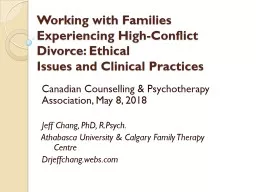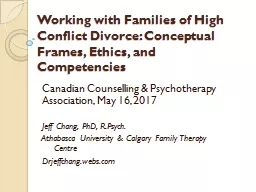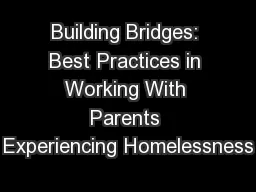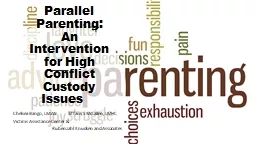PPT-Working with Families Experiencing High-Conflict Divorce: Ethical
Author : myesha-ticknor | Published Date : 2018-11-25
Issues and Clinical Practices Canadian Counselling amp Psychotherapy Association May 8 2018 Jeff Chang PhD RPsych Athabasca University amp Calgary Family Therapy
Presentation Embed Code
Download Presentation
Download Presentation The PPT/PDF document "Working with Families Experiencing High-..." is the property of its rightful owner. Permission is granted to download and print the materials on this website for personal, non-commercial use only, and to display it on your personal computer provided you do not modify the materials and that you retain all copyright notices contained in the materials. By downloading content from our website, you accept the terms of this agreement.
Working with Families Experiencing High-Conflict Divorce: Ethical: Transcript
Download Rules Of Document
"Working with Families Experiencing High-Conflict Divorce: Ethical"The content belongs to its owner. You may download and print it for personal use, without modification, and keep all copyright notices. By downloading, you agree to these terms.
Related Documents














